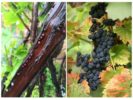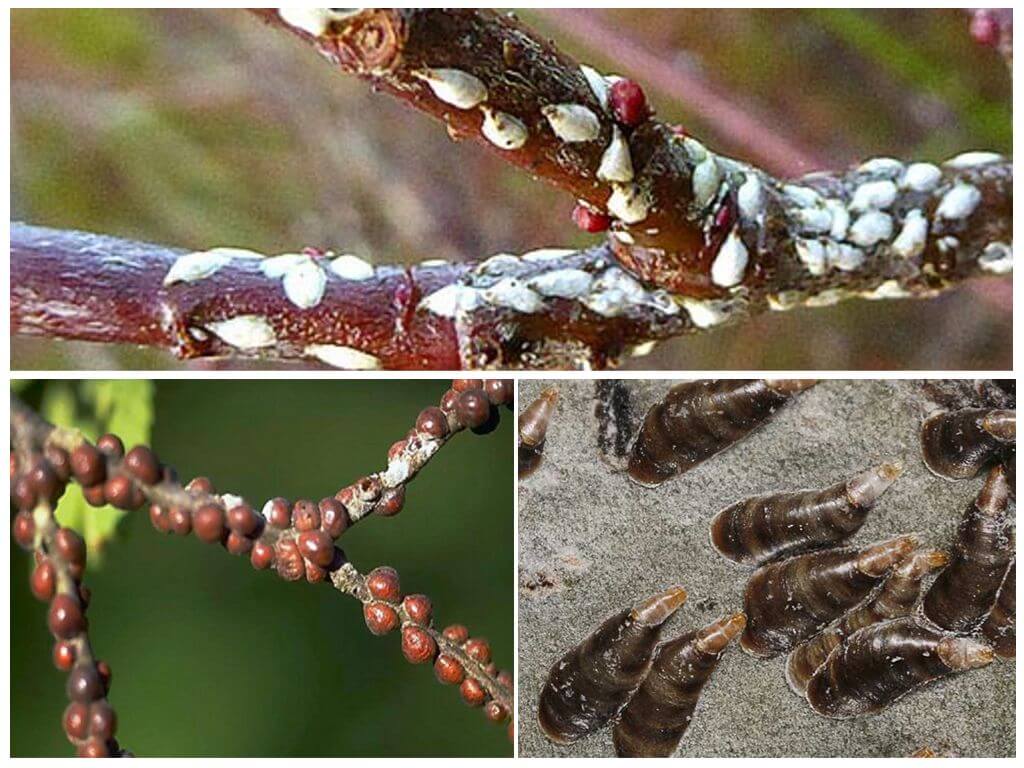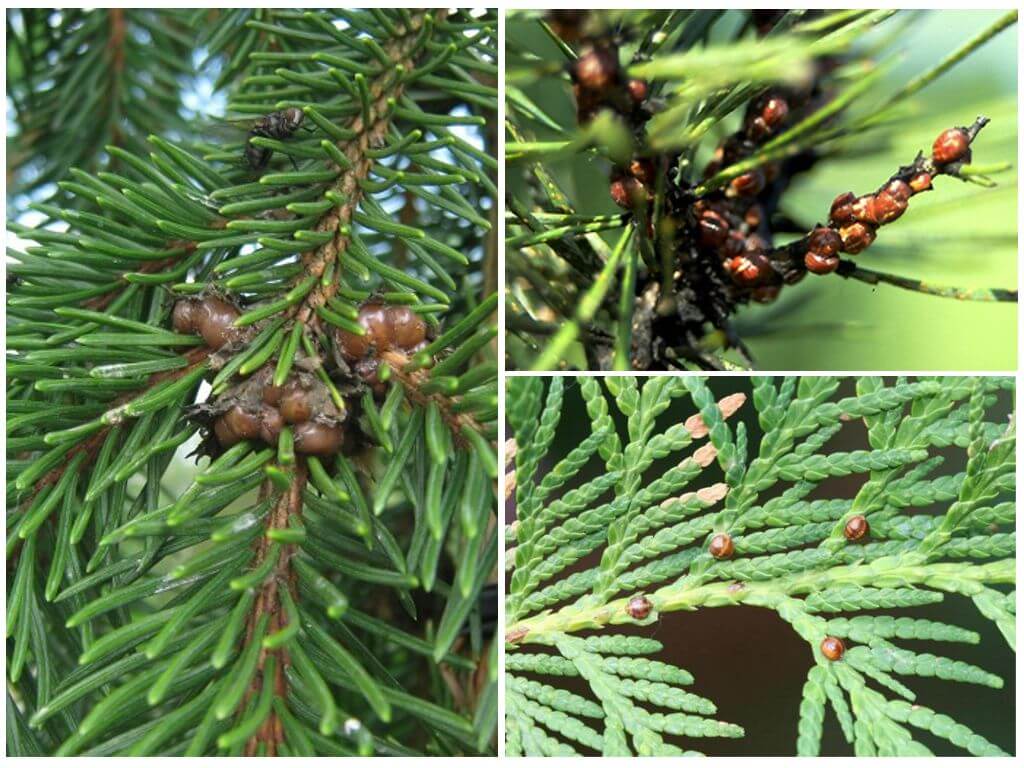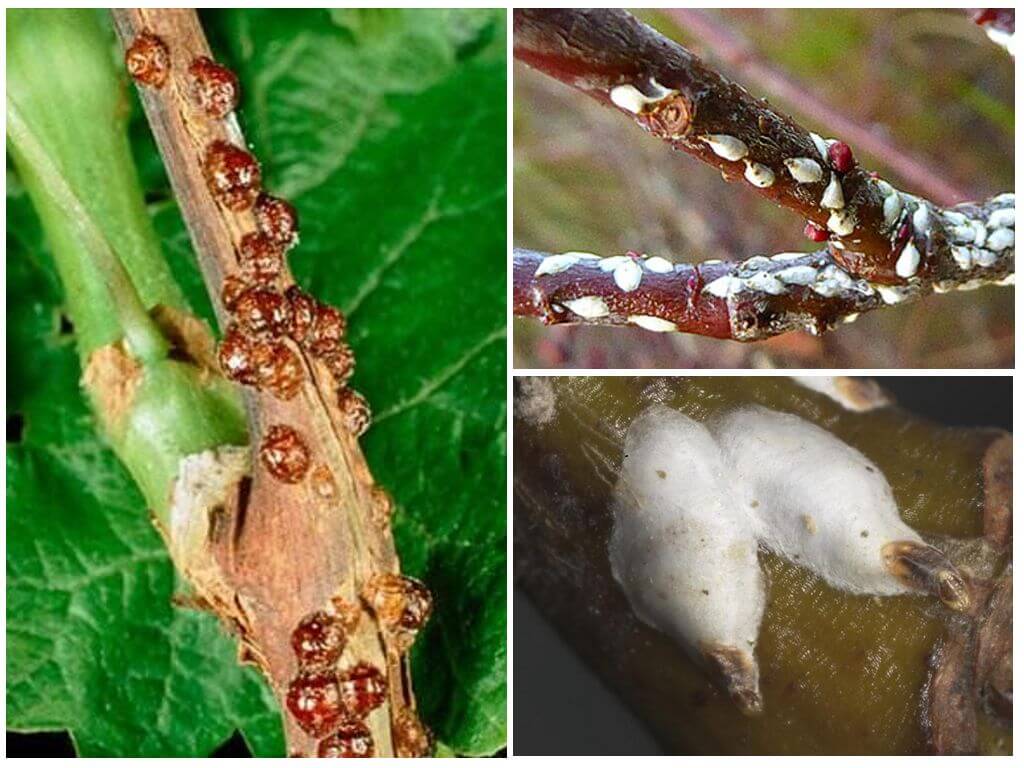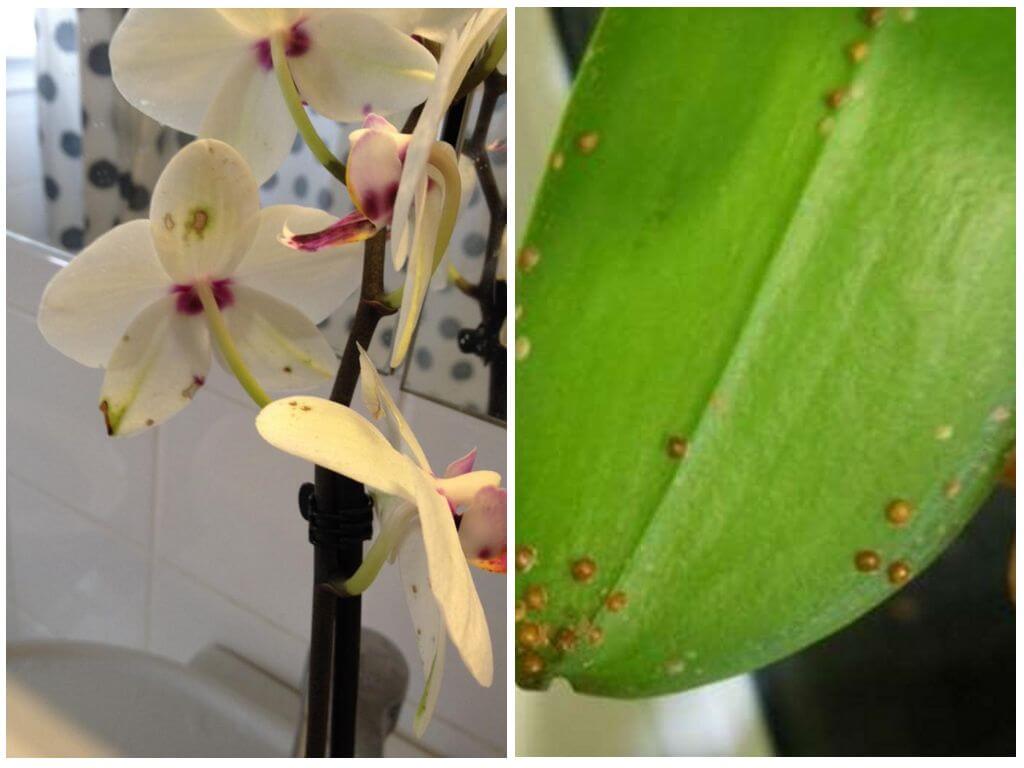- Shield on grapes
- Chemical products from scabs
- Pest destruction by folk remedies
Grape shoots attract the attention of many harmful insects. The plant can enjoy leaflets, thrips, aphids, numerous species of ticks, weevils and mealy bugs. This list can also include sedentary scale insects that settle on the vine and feed on its juices. As a result, the damaged parts of the plant begin to weaken and dry out, which leads to a decrease in yield. Therefore, the question of how to deal with scale insects on grapes is puzzled by many lovers of grape culture.
Pest Features
Scabies are small insects whose body length does not exceed 5 mm. The surface of the body is covered with a wax dome-shaped carapace, the color of which, depending on the species, can be white, gray, brown-black and even orange. You can distinguish a female from a male by a larger size.
On a note!
Insects are able to move only at an early age, while the formation of the shell, they become immobile and settle on one plant.
Symptoms of infection
Serves for midges plant juice, from which the latter loses nutrients and becomes weak. Grape growth slows, and leaves and fruits begin to wither and fall. Considering that scaleflies multiply very quickly, then very soon insects will be present not only on the leaves, but also on the fruits, ovaries, and even the bark of the plant. Therefore, it is very important to get rid of shields on grapes as soon as possible. Otherwise, it will not be possible to wait for a full crop.
The following signs may indicate that a shield has settled on the grapes:
- a yellow spot forms at the site of the lesion of the scabbard leaf plate, which increases as the pest sucks the juice, subsequently the leaf becomes almost completely yellow;
- oily plaque appears on the leaves of grapes - honey dew;
- the leaf plate twists and falls over time, as a result of which the vines of the grapes become completely bare;
- the plant stops growing and may even dry out.
A photo of the scale insect on grapes is presented below.
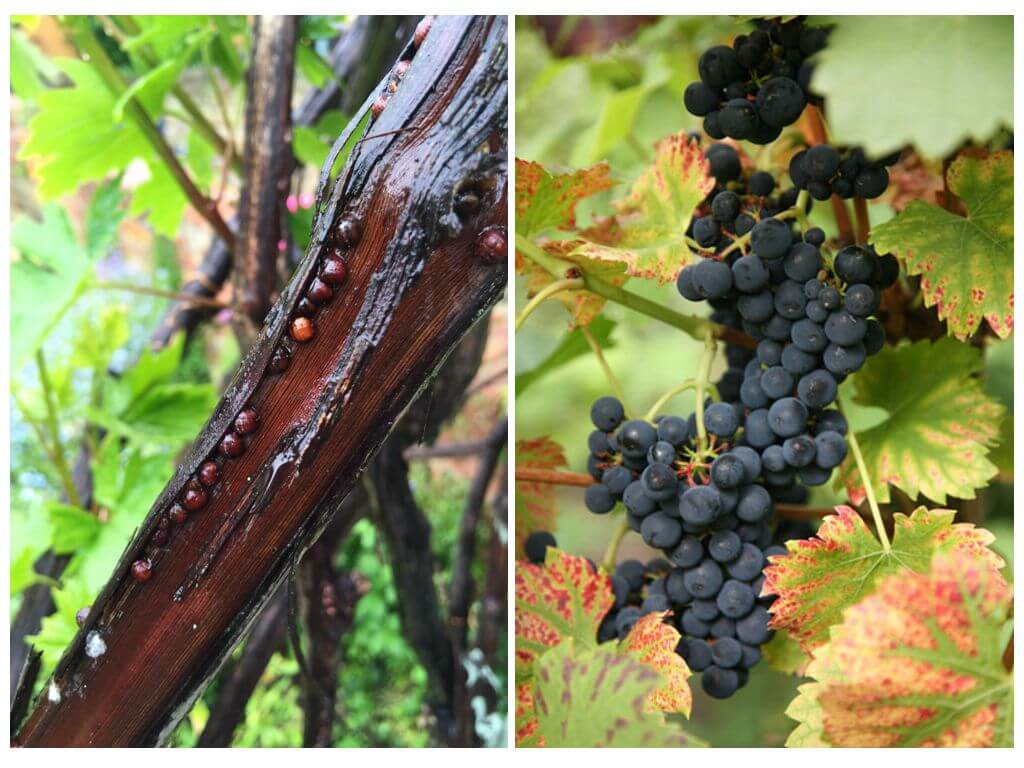
How to deal with a pest
There are various methods to deal with the shield on grapes.
Simple ways
The wax armor worn by the shield is an excellent insect protection. It prevents the penetration of chemicals on the body of the insect, which makes the fight against scale insects on grapes very difficult. Therefore, with a small number of insects, you can use a brush with a metal pile.
On a note!
You can protect the vineyard from scale insects by attracting predatory insects, for example, wasps or ladybugs. It is enough to simply release them into the infected vineyard.
Chemical exposure

A more effective way to deal with scale insects is to use chemical funds from midges:
- Aktara is the most popular contact-intestinal insecticide with a wide spectrum of action.The product is available in the form of a concentrated suspension and in the form of granules. Thiamethoxam acts as an active substance - a toxic substance that acts on insects, both when watering (during the day) and when spraying (for 2-4 hours).
- BI 58 new - a systemic insecticide is a concentrated emulsion, the basis of which is dithiophosphoric acid. It affects insects by contact and intestinal methods. The emulsion is diluted in accordance with the instructions, the resulting solution is used for spraying. To achieve maximum results, double use is necessary. The protective effect lasts for three weeks.
- Confidor Extra - a systemic insecticide effective against sucking-gnawing pests. The active substance in the granular product is imidacloprid - a toxic substance that acts on insects in contact, as well as with food. The residual effect lasts for a month.
Folk recipes
Despite the fact that folk remedies are less effective than chemicals, they are safer. To to fight the scutellum in the trees in the gardenincluding grapes currant, lemon and coniferous plants, you can use simple methods.
Garlic and soap
To prepare a working solution for processing grapes from scabs, grated laundry soap is mixed with chopped garlic. Then the resulting mixture is combined with water in a ratio of 1: 3. The resulting solution is filtered and used to spray grapes infected with scab. A day after the procedure, the product is washed off with a water stream. Such treatments should be carried out every 3 days until the pests disappear completely.
Bow
It is good to apply and onion infusion to protect grapes from scale insects. For its preparation, 4 finely chopped onions are poured 1 liter of water, after which they are left to infuse for 4 hours. Strained infusion is used to spray the vines.
Ash
One of the popular folk remedies is wood ash. To combat the scab, use an infusion based on it. 300 g of the substance is poured with a liter of boiling water and insisted for 30 minutes. After filtered and diluted with 9 l of water. The solution is used to spray grape bushes affected by the pest.

Hot pepper
No less effective effect and infusion of bitter pepper. 100 g of chopped fruits are boiled in 1 liter of water for 15 minutes. Insist for a day, after which the concentrate is filtered and used to prepare a working solution: 1 l of water is mixed with 10 g of pepper concentrate and 5 g of green soap.
Celandine
A recipe from celandine does not require large expenditures. 3 kg of fresh grass insist in a bucket of water for a day. Strained infusion is used to treat grape leaves damaged by scab.
Fern
Fern also has repellent properties. A decoction is prepared from it, which is used to spray the vine. 1 kg of fresh plant is infused in 10 l of water for 24 hours, then boiled for 30 minutes. The cooled and filtered broth process the infected vines.
Preventive actions
Such measures are more preventive and will help to avoid infection of the plant with pests.
- In late autumn and early spring, the land is deeply dug up on the site, fertilizing and pruning dried branches and twigs. They also get rid of basal shoots.
- The bark of grapes is cleaned of moss and lichen, where scabies usually prefer to hide.
- For planting, it is better to use seedlings from specialized nurseries, carefully examining them with a magnifier.
- Covering the vine for the winter, it is cleaned of the old bark and subjected to treatment with a solution based on tar soap.
